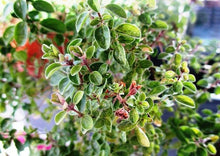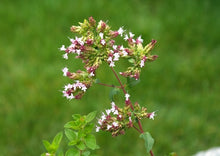
Heirloom Sweet Marjoram is a type of herb that has been treasured for its unique flavor and aroma for centuries. This herb is a variety of marjoram, which is a member of the mint family and is closely related to oregano. Heirloom Sweet Marjoram is prized for its sweet, subtle flavor and aroma, which is why it is often used in a wide range of culinary dishes.
The origin of Heirloom Sweet Marjoram can be traced back to ancient Greece and Rome, where it was widely used in cooking and medicine. This herb was also believed to have spiritual and mystical properties, and was often used in religious ceremonies and rituals. Today, Heirloom Sweet Marjoram is still widely used in Mediterranean and Middle Eastern cuisine, and is known for its ability to enhance the flavor of meats, fish, and vegetables.
Heirloom sweet marjoram differs from the common marjoram as it is a non-hybridized, non-GMO and open-pollinated variety which means it has not been genetically modified and can produce seeds that will grow true to the parent plant. Moreover, Heirloom varieties are passed down through generations and are known for their superior taste, texture and health benefits.
In addition to its culinary uses, Heirloom Sweet Marjoram is also believed to have many health benefits. The essential oils found in this herb are known for their anti-inflammatory, antioxidant, and antimicrobial properties.
Heirloom Sweet Marjoram can be used in many different ways in the kitchen. The leaves can be dried or fresh and can be used to flavor meats, soups, stews, and sauces. It also pairs well with other herbs such as thyme, rosemary and basil. Heirloom sweet marjoram can also be used in tea blends, marinades, and rubs for meats.
GrowingSweet marjoram is easily grown from seed or cuttings. It prefers a full sun location and requires a well-drained soil. Sweet marjoram tends to be a low spreading plant that benefits from being pruned back when it is 6-8 inches tall to encourage a bushy growth habit. To enhance seed germination, soak seeds in water overnight.
Harvesting
Harvest marjoram when ball-like tips appear at the ends of the stems. When the plant starts to bloom, cut plants back close to the ground to stimulate a new flush of growth. The second flush of growth tends to be a more desired crop than the first cutting. Air dry cut stems and store in sealed containers.
Click here to download our free vegetable growing guide










